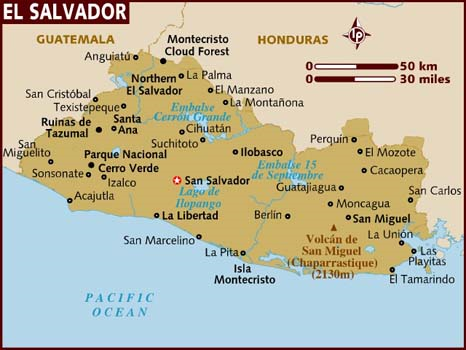 Profiles of EL Salvador Import and Export Data
Profiles of EL Salvador Import and Export Data
EL Salvador Import and Export Data is also called EL Salvador Import Export Data, or EL Salvador Import and Export Trade Data, EL Salvador Trade Data. There are 3 kinds of EL Salvador Import and Export Data: EL Salvador Bills Data(SVBD), EL Salvador Trade Flow Data(SVTF),. and EL Salvador Importers and Exporters(SVIE).
 Profiles of EL Salvador Bills Data(SVBD)
Profiles of EL Salvador Bills Data(SVBD)
EL Salvador Bills Data (SVBD), is also called EL Salvador Bill of Lading Data, or EL Salvador B/L Data. EL Salvador Bills Data (SVBD) have both EL Salvador companies and foreign companies information. We have live EL Salvador Bills Data (SVBD) since 2000 onwards. EL Salvador Bills Data (SVBD) is searched by product description wise (product key words).
EL Salvador Bills Import and export Data (SVBID) include Reporting Country, ImpExp, Departure Date, Arrival Date, Shipper, Shipper Address, Month, Consignee, Consignee Address, Notify, Notify Address, Bill Of Lading Nbr#, Voyage, Carrier, Port of Departure, Port of Destination, Port of Arrival, Country of Origin, Country of Destination, Vessel, Vessel Country, IMO Code, B/L Teus Quantity, Container (Container Description), Container LCL/FCL (Container Description), Teus (Container Description), Description (Container Description), Year, etc. You may communicate with buyers and suppliers directly as per your requirements.
EL Salvador Bills Data (SVBD) sample can be viewed and searched by clicking the BTDaaS comtrade system.
 Service Process:
Service Process:
1) Please search the data sample according to your requirement on our website, and confirm if it is what you are interested; If yes, please send the information you require, including product key words and periods you order. It is best for you to download the order form, and please send it to us after filling in.
2) We both sides agree on price and service content; We send you invoice, and then you pay according to the payment route in the invoice; It is best for you to send the remittance copy to us via fax or email;
3) We send you data via email; You can also view and download the data and report automatically generated in our online system by your user ID and password.
 Profiles of EL Salvador Trade Flow Import and Export Data(SVTF)
Profiles of EL Salvador Trade Flow Import and Export Data(SVTF)
EL Salvador Trade Flow Import and Export Data(SVTF) include HS Code, Product, Reporting Country, Partner Country, Quantity, Value, Price, Continents etc., provided according to the first 6-digt HS Code. We provide actual live EL Salvador Trade Flow Import and Export Data(SVTF) since 2000 onwards.
EL Salvador Trade Flow Import and Export Data(SVTF) can be viewed and searched on the BTDaaS comtrade system.
 Service Process:
Service Process:
1) Please search the data sample according to your requirement on our website, and confirm if it is what you are interested; If yes, please send the information you require, including 6- digit HS Code, periods you order, and trade type ( import, export, or import & export); It is best for you to download the order form, and please send it to EL Salvador after filling in.
2) We both sides agree on price and service content; We send you invoice, and then you pay according to the payment route in the invoice; It is best for you to send the remittance copy to EL Salvador via fax or email;
3) We send you past data in 1 workday, and send the last-month data at the end of every future month via email; You can also view and download the data and report automatically generated in our online system by your EL Salvadorer ID and password.
 Profiles of EL Salvador Importers and Exporters(SVIE)
Profiles of EL Salvador Importers and Exporters(SVIE)
You will get complete details of company such as Name and address of company, complete contact details, Email Address, Contact person, etc. You may communicate with buyers (Importers) or suppliers (Exporters) directly as per your requirements.
EL Salvador Importers and Exporters(SVIE) contains detailed contact information, provided according to the-first-6-digit HS Code. EL Salvador Importers and Exporters(SVIE) can be viewed and searched on the BTDaaS comtrade system.
 Service Process:
Service Process:
1) Please search the data sample according to your requirement on our website, and confirm if it is what you are interested; If yes, please send the information you require, including the-first-6- digit HS Code, periods you order, and trade type ( import, export, or import & export); It is best for you to download the order form, and please send it to us after filling in.
2) We both sides agree on price and service content; We send you invoice, and then you pay according to the payment route in the invoice; It is best for you to send the remittance copy to us via fax or email;
3) We send you past data in 1 workday, and send the last-month data at the end of every future month via email; You can also view and download the data and report automatically generated in our online system by your user ID and password.

Local Name: El Salvador; Formal Name: Republic of El Salvador
Location: Central America
Capital City: San Salvador
Main Cities: Santa Ana, San Miguel
Population: 5,641,000
Area: 21,040 km2
Currency: 1 colón = 100 centavos
Languages: Spanish
Religions: Roman Catholic
After the overthrow of the Spanish King by Napoleon, El Salvador and others declared their independence from Spain in 1821. Then, El Salvador, as well as Costa Rica, Guatemala, Honduras and Nicaragua formed the United Provinces of Central America, but that federation quickly dissolved, and El Salvador became an independent republic in 1838.
 Uzbekistan
Other Asia Countries
Uzbekistan
Other Asia Countries
 China Data
China Data
